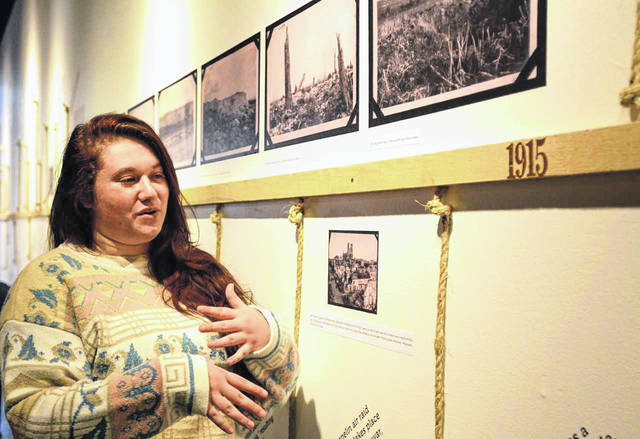
WILMINGTON — World War I ended 100 years ago on Nov. 11, 2018. The Meriam R. Hare Quaker Heritage Center at Wilmington College is presenting an exhibit in commemoration of the Armistice Day anniversary and a role played by Quakers in rebuilding war-ravaged Europe.
The new QHC gallery exhibit, titled “The Quaker Conscientious Objectors of Wilmington College at The Great War’s End: Reconstructing Themselves and Their World,” opens Sunday, Nov. 11 and runs through May 14. Normal gallery hours are weekdays, from 10 a.m. to 4 p.m., with additional times by special arrangement.
An opening reception will be held Sunday from 6 to 8 p.m. The event is free of charge.
This exhibit reveals the deep commitment to nonviolence of five young Quaker students at Wilmington College during World War I (1914-1918).
Amidst tremendous social and political pressure to register as soldiers through the 1917 Selective Service Act, these five men followed their Quaker faith as conscientious objectors and left their families, friends and studies to serve nonviolently in the rebuilding of war-torn Europe. In so doing, they also rebuilt their image of themselves, their Quaker identities and their firm belief in the need to abolish war.
These five men were among the 14 local Quakers and thousands across the country who contributed to the massive relief effort needed in Europe from 1917 to the early 1920s. They are: Mark E.C. McMillan, Class of 1918, Richard A. Larkin ’20, Francis H. Farquhar ’11, Luther E. Warren ’17 and Maynard J. McKay ’16.
“These young men chose to put their lives on hold for the good of others,” said Mikaela Prescott, a sophomore history major from Dublin and one of 10 students involved in creating the exhibit. Her primary focus was assembling a World War I timeline placed on the QRC gallery wall.
It includes a number of the more than 400 photographs taken by McKay during his relief work in France. Others appear inside an 8×12-foot wooden house, which is the centerpiece of the exhibit.
Mike McCormick and friends built the structure from an area ash tree recently sawn into lumber. It’s a replica of houses relief workers built for victims of the Battle of Verdun in France.
The Battle of Verdun in 1916, at more than nine months, was the longest of the war and took an especially heavy toll on French troops and area residents.
Prescott said viewing the photos, reading now century-old diaries and letters home, and holding such artifacts as McMillan’s uniform have given her a powerful connection to The Great War and the role these WC students played in its aftermath.
“It’s been a very hands-on project that’s being used to educate,” Prescott said, noting she’s spent every available moment lately helping to finish the exhibit.


